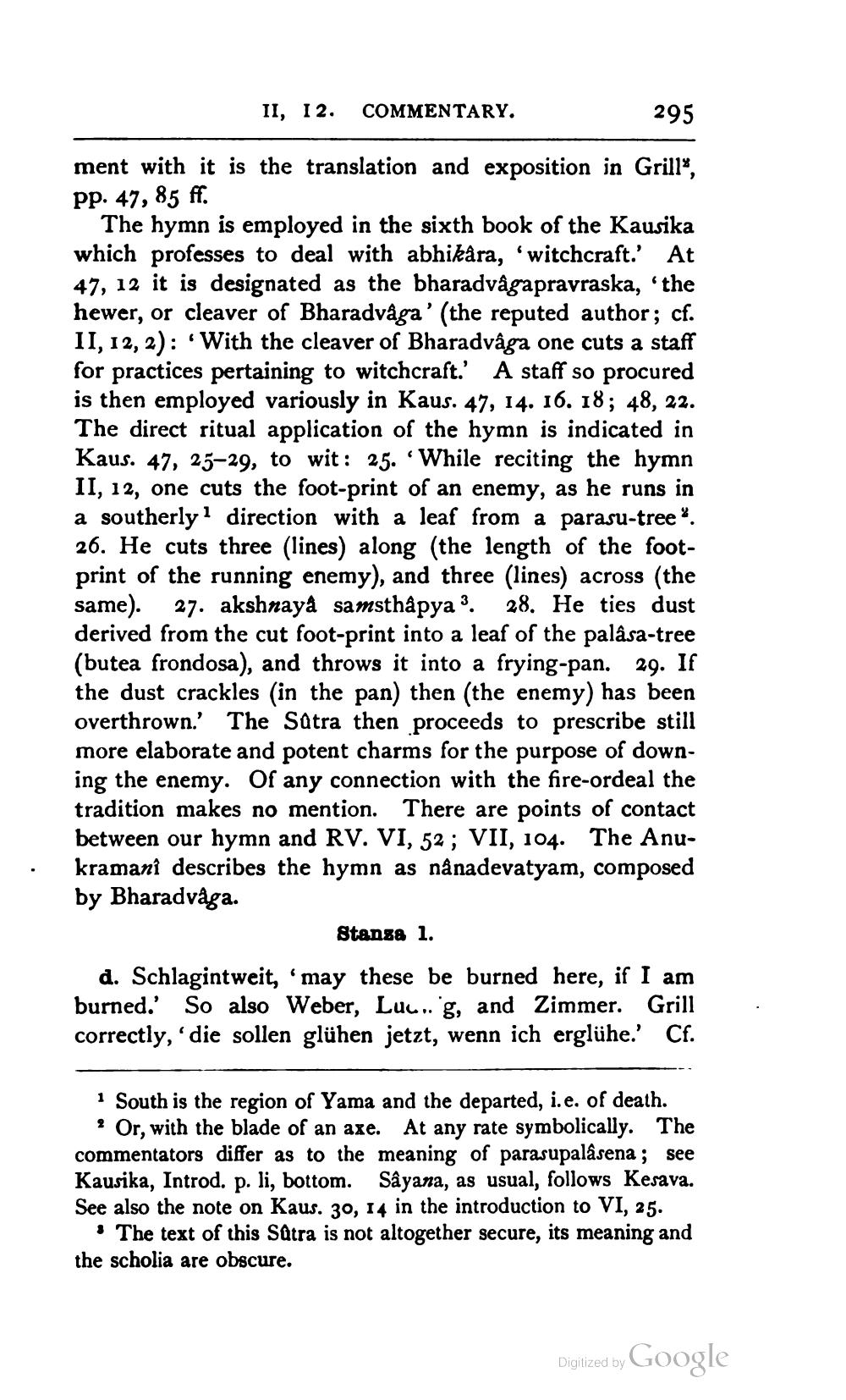________________
II, 12. COMMENTARY.
295
ment with it is the translation and exposition in Grill*, pp. 47,85 ff.
The hymn is employed in the sixth book of the Kausika which professes to deal with abhikara, 'witchcraft.' At 47, 12 it is designated as the bharadvågaprayraska, 'the hewer, or cleaver of Bharadvåga' (the reputed author; cf. II, 12, 2): With the cleaver of Bharadvåga one cuts a staff for practices pertaining to witchcraft.' A staff so procured is then employed variously in Kaus. 47, 14. 16. 18; 48, 22. The direct ritual application of the hymn is indicated in Kaus. 47, 25–29, to wit: 25. While reciting the hymn II, 12, one cuts the foot-print of an enemy, as he runs in a southerlyl direction with a leaf from a parasu-tree". 26. He cuts three (lines) along (the length of the footprint of the running enemy), and three (lines) across (the same). 27. akshnaya samsthåpya 3. 28. He ties dust derived from the cut foot-print into a leaf of the palâsa-tree (butea frondosa), and throws it into a frying-pan. 29. If the dust crackles (in the pan) then (the enemy) has been overthrown.' The Satra then proceeds to prescribe still more elaborate and potent charms for the purpose of downing the enemy. Of any connection with the fire-ordeal the tradition makes no mention. There are points of contact between our hymn and RV. VI, 52 ; VII, 104. The Anukramani describes the hymn as nånadevatyam, composed by Bharadvága.
Stansa 1. d. Schlagintweit, may these be burned here, if I am burned.' So also Weber, Luu.. g, and Zimmer. Grill correctly, 'die sollen glühen jetzt, wenn ich erglühe.' Cf.
1 South is the region of Yama and the departed, i.e. of death.
? Or, with the blade of an axe. At any rate symbolically. The commentators differ as to the meaning of parasupalâ sena; see Kausika, Introd. p. li, bottom. Sâyana, as usual, follows Kesava. See also the note on Kaus. 30, 14 in the introduction to VI, 25.
"The text of this Satra is not altogether secure, its meaning and the scholia are obscure.
Digized by Google




